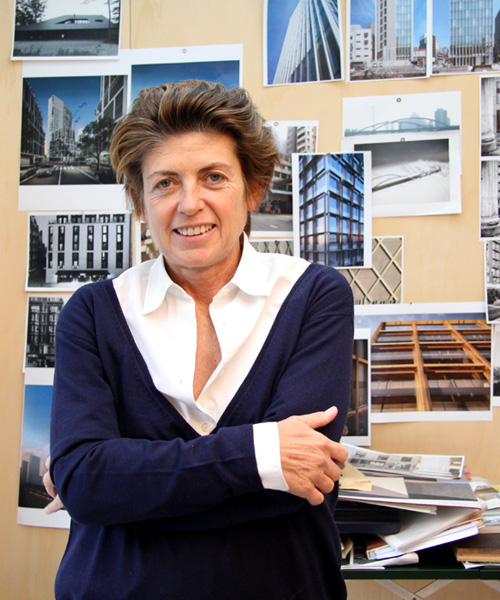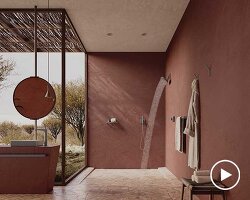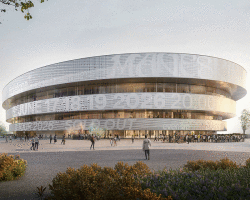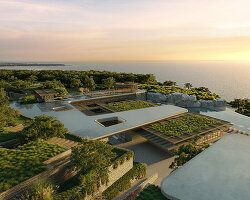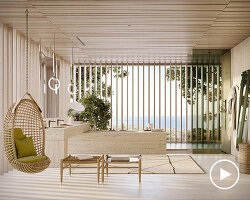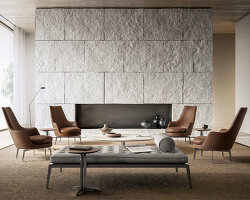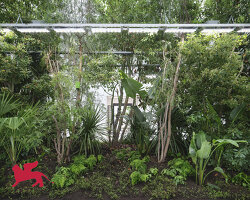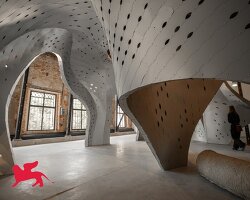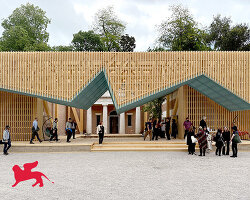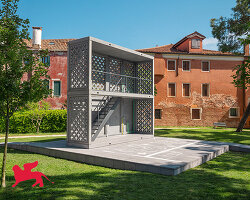antonio citterio and patricia viel are the founders of antonio citterio patricia viel: a multi-interdisciplinary studio that works across the fields of architecture, interior and product design. the firm works internationally, involved in developing complex projects of varying scales, such as hotels, offices, production facilities, residential and commercial complexes, showrooms and town planning schemes. the practice has established a name for itself for possessing a strong expertise in providing complete detailed documentation that encompasses both the shell and core to the interior of a building — from a structure’s envelop to interior fit-out — as well as offering bespoke millwork elements and furniture details for the builds they are involved in. some of its most notable works include: the ermenegildo zegna group headquarters in milan, italy; the bulgari hotel in london, UK; and the technogym village in cesena, italy.
designboom visited the firm’s milan headquarters and spoke with patricia viel about her approach to architecture, the challenges of working internationally, and what project has given her the most satisfaction.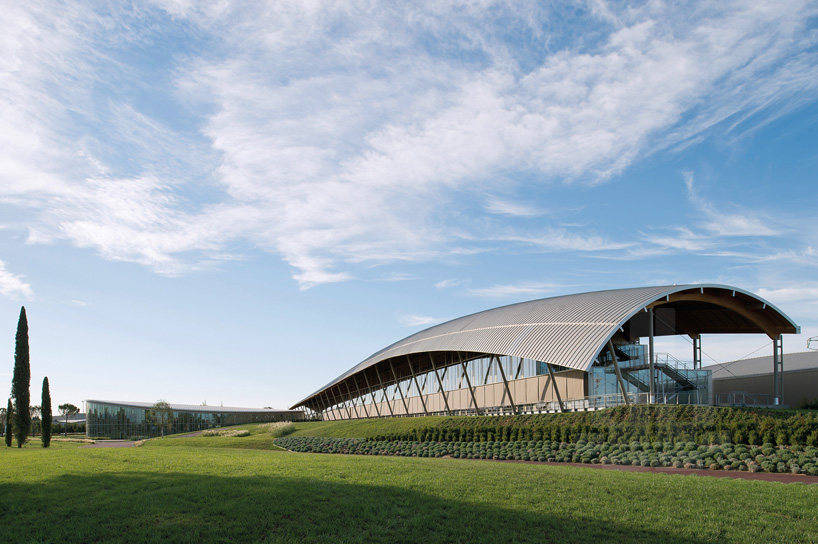
technogym village, cesena, italy (2012)
design antonio citterio patricia viel and partners
photo courtesy technogym
DESIGNBOOM: what originally influenced you to become an architect?
PATRICIA VIEL: it’s a difficult question for me because I don’t remember. I always had a feeling. during my childhood, I played with toys that somehow was a forecast of my future life. I was building small houses in cardboard at 10 years old, but I honestly cannot remember when I decided to be an architect. I believe that my mother was someone that was really sensitive to interior design. she liked change, to move from house to house every six or seven years. she was attracted by a new location, a new apartment, a new situation, and for that reason she always had the opportunity to rethink our domestic space. it was very common to receive architecture and interiors publications at home, and of course they were accessible to me. so, probably my mother on one hand. on the other hand, my father always had the dream of being involved in architecture. his father was a painter, among other things, and his grandfather was a civil engineer; but he did something completely different in his life. however, books on architecture, urbanism, art history were always being brought into the house so I was surrounded by this creativity from a very young age.
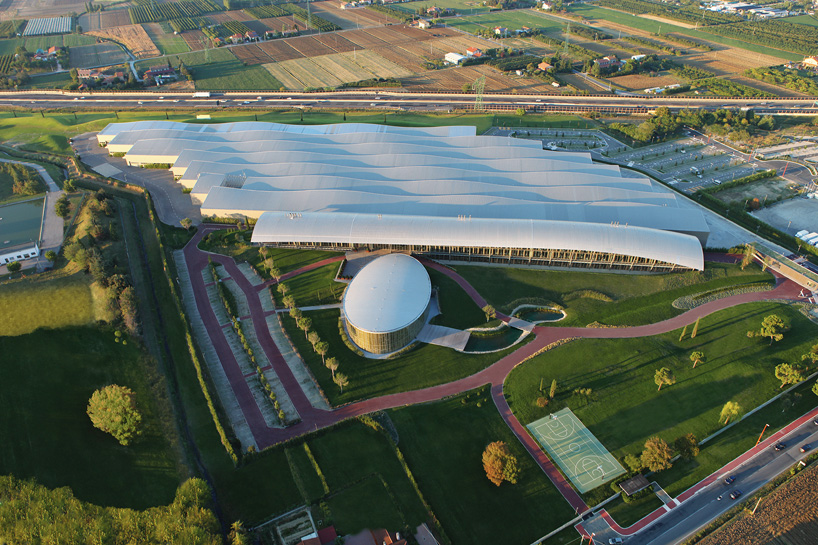
technogym village, cesena, italy (2012)
design antonio citterio patricia viel and partners
photo courtesy technogym UK
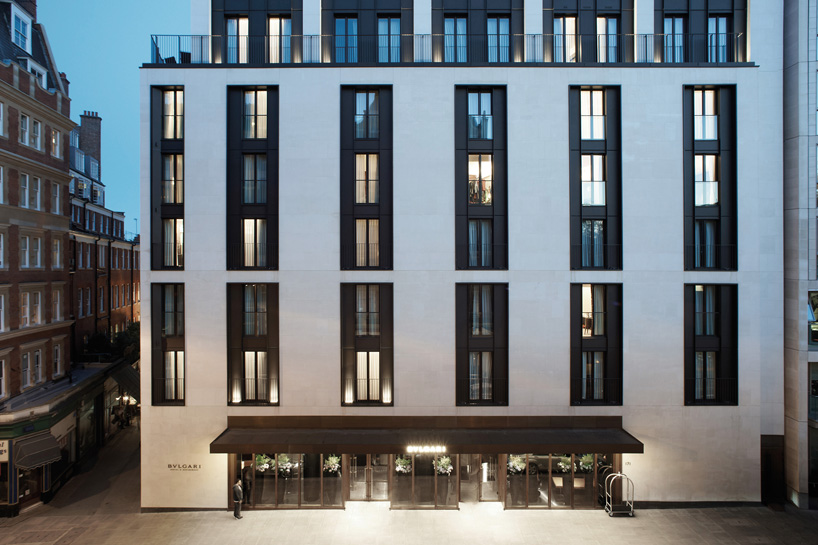
bulgari hotel and residences, london, UK (2012)
design antonio citterio patricia viel and partners
photo leo torri
DB: how would you describe your architectural approach?
PV: I’m extremely concerned by the fact that design and architecture has a social impact. we are called to utilize the resources that are not renewable: space, time, money, life… because in order to design a building and to build it you need years. so, I believe that my attitudes are extremely serious and conscious about all those elements. I am not someone who is playing with the project, or doing any ‘fun stuff’, if you like. I prefer to achieve something that is bringing happiness because of its beauty, because of its harmony, because of the evidence that it is the right thing to do.
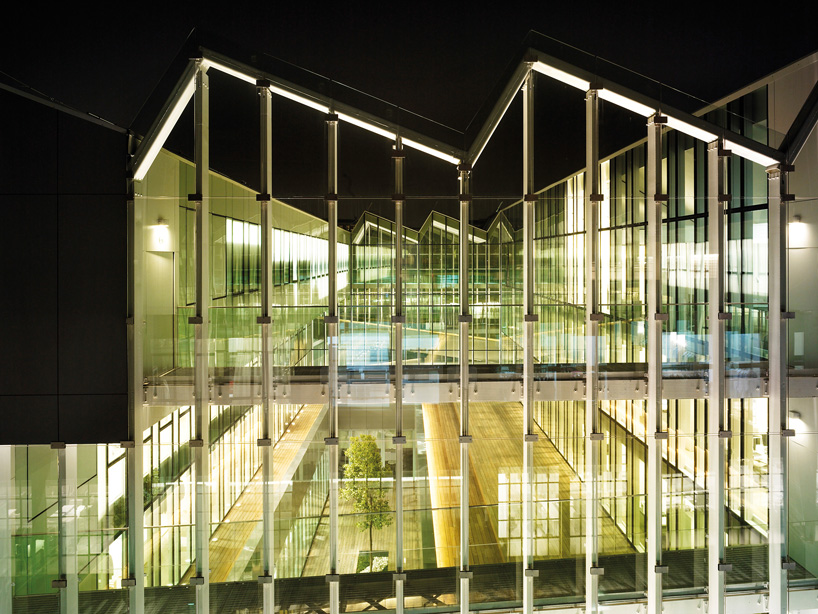 ermenegildo zegna headquarters, milan, italy (2008)
ermenegildo zegna headquarters, milan, italy (2008)
design antonio citterio patricia viel and partners
with studio architettura beretta associati
photo leo torri 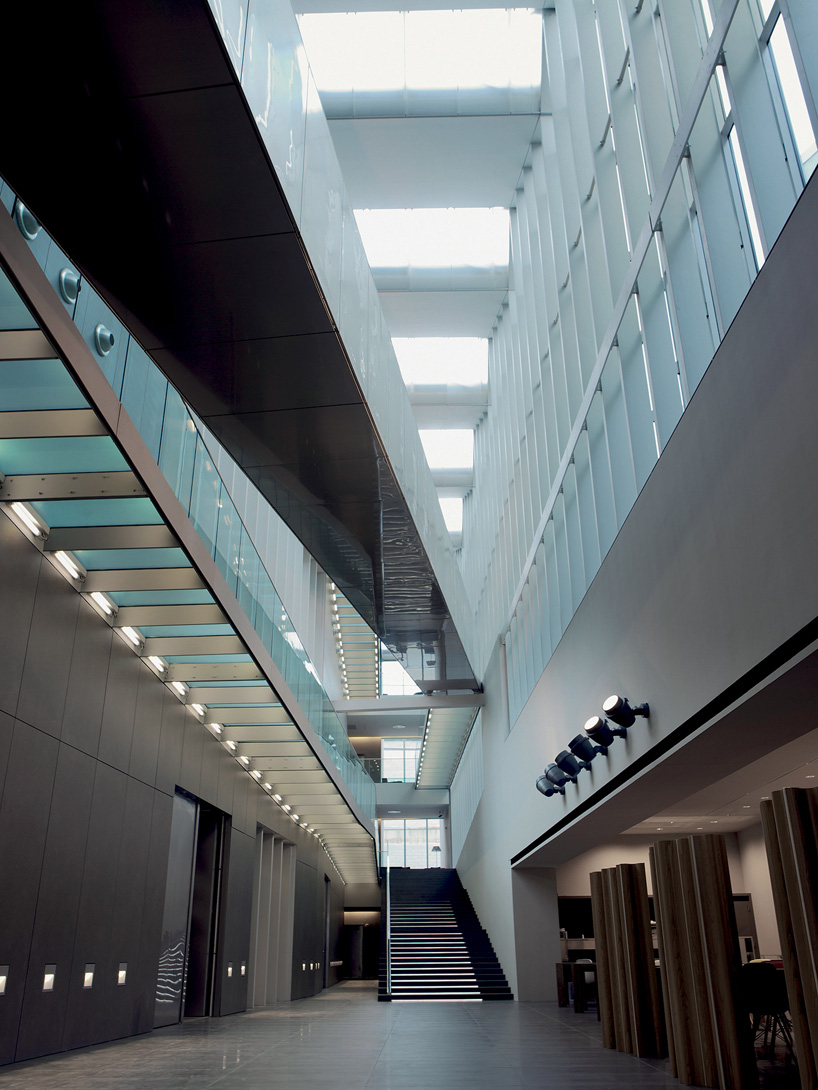
ermenegildo zegna headquarters, milan, italy (2008)
design antonio citterio patricia viel and partners
with studio architettura beretta associati
photo leo torri
DB: the firm does work across quite a range of projects — from retail spaces to product design to larger scale plans such as the headquarters for technogym. looking at your practice’s diverse work, how you go about commencing the design process for each one?
PV: design is something that antonio (citterio) does, so product design, is actually something I don’t know how to do! it is a completely different discipline, it is a completely different state of mind, so I would not place product design in this kind of analysis. but, when you talk about architecture crossing scales like urban design to architecture and interior design, I believe that first of all our attitude is something well done — the feasibility of things, the quality of construction, the madness, the fact that we believe that something should be maintained by hand. we are always concerned about the life of the building after us, and that’s probably the more consistent mental attitude that can be seen across all scales of our projects. for the rest, it’s all about skills, competence, level of analysis, and the quantity of the prohibition that you need to go through. of course when you go through urban design, you need have a certain amount of expertise in the field. you have to connect with a certain amount of information. of course it’s less sensitive for an interior designer who needs to imagine a mood and build a kind of atmosphere, but you do it. what you need to have in your background is a very deep amount of visual experience. so, the background and the amount of skills, along with your capabilities play a big role in this. I think that our practice, the fact that we are asked to develop the interior and exterior of the same project, is quite unique for this reason.
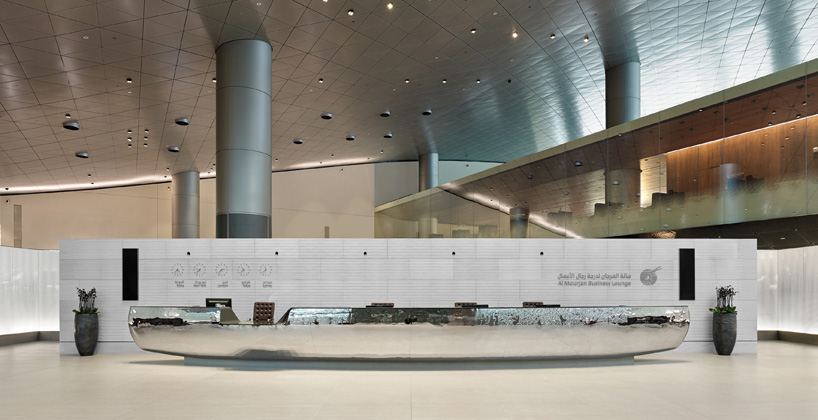 al mourjan business lounge, hamad international airport, doha, qatar (2014)
al mourjan business lounge, hamad international airport, doha, qatar (2014)
design antonio citterio patricia viel interiors
photo leo torri
DB: you are working across the globe, so how does the choice of form and material reflect the individual cultural context of each project; and how does this factor into your design process?
PV: we try to always to be, I don’t want to say compatible, but somehow close to where we are. what we really believe is that clients are expecting something that is of a strong, european character. what we learned from working abroad in asia, in america, in the middle east, is that our culture as european architects has an enormous value. somehow we are recognized as a community, a population that really has the secret to the good life, and we export this. this kind of knowledge which is not only architectural, it’s about food, living, spending time, fashion… is a whole attitude, a way to reach a certain kind of wellness, happiness, well-being; and this is something that is recognized as very special in europe. we’ve designed a lot of residential buildings, and we are developing a lot of hotels at the moment. so, of course in these kinds of projects where the rituals of the day-to-day life are deep important considerations, we’ve experienced that being european is extremely important. 
expo 2015 accessibility works, milan, italy (2015)
design antonio citterio patricia viel and partners
photo leo torri
DB: you mentioned that the work you are doing at the moment includes a number of luxury hotels. how did you enter that niche?
PV: it was a coincidence. we started with bulgari in 2001, but we were trying to get in because we understood that that particular historical moment was really a magical moment in which the hotel industry was changing a lot. what was expected of the luxury concept was transforming into something more in-style, classic interiors… and there was a breakaway from the old, historical buildings. the hospitality industry was looking at something new, something that reflected the lifestyle of the millennials — a new generation of people capable of spending money, to travel, to work abroad. in a way the new nomads. the fact that we are capable of designing the entire context of a project — from the building to the interiors and the furniture — somehow put us in a very special position in which to offer this kind of service. we were contacted by bulgari, which is a fantastic italian brand, full of content, character and personality, who was looking for an office to design its complete chain of bulgari hotels, and we started with that. it’s not something that we are somehow developing with other brands. that is not our goal. I think we have had a lot of good experience with bulgari, and we have achieved a lot with them. we created something very new. a sort of contemporary, classic, luxury that was not available before. now it’s something that is, if you like, a benchmark for a lot of brands. we are very happy to be working with them. on the other hand, the mandarin oriental is a pure hotelier brand, which makes a difference of course. but for us it’s something that really is related to the fact that we are capable of completing a hotel project from exterior to interior. 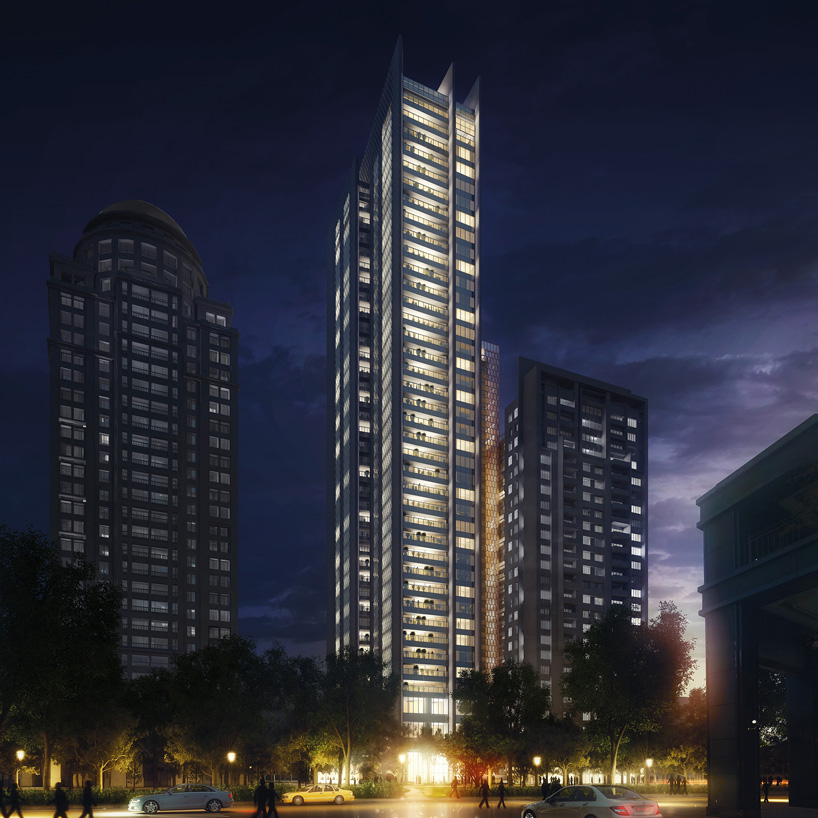
residential tower 7th district, taichung, taiwan (2013-17)
design antonio citterio patricia viel and partners
rendering copyright antonio citterio patricia viel and partners 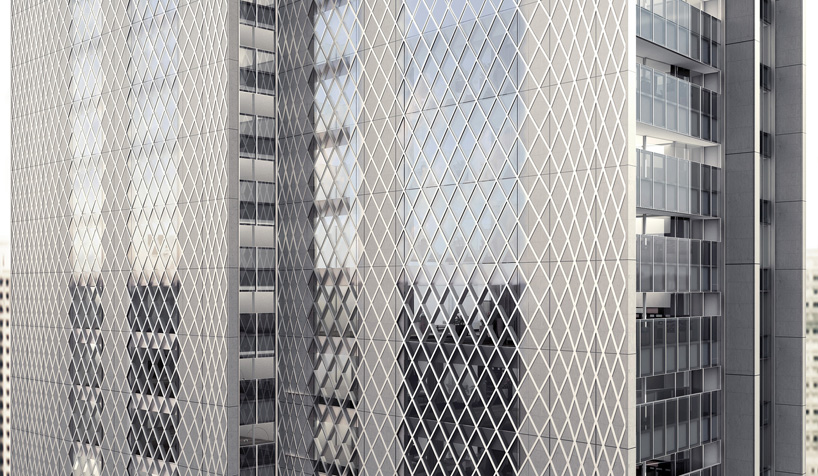
residential tower 7th district, taichung, taiwan (2013-17)
design antonio citterio patricia viel and partners
rendering copyright antonio citterio patricia viel and partners
DB: now that computer generated visualizations are so commonplace, is there still a place for physical model making or sketching designs by hand?
PV: working on a project in two dimensions with software is over. for some reason with BIM (building information modelling) we are returning to a strong manipulation of architecture with our hands. then you build a very sophisticated instrument to control the project with software, and then you create 3D models in different material for different proposals in different phases. but with BIM, I think that we’re back to engaging with touching and thinking of the project through pure manual work, because when you go through software modelling, you have to be extremely clear about what you want to do, in which way, what kind of details you are using for this or that solution… it’s a different way to manage the creation of architecture. you don’t go through the pure representation anymore. what was done in two-dimensions, a kind of drawing… a fake drawing of your project (laughs) is gone! now what you do is you sketch, you find solutions, and you build the real model. even though it’s virtual, it’s a real model. it’s not a representation, it’s three-dimensional and poses all the issues you would have to address.
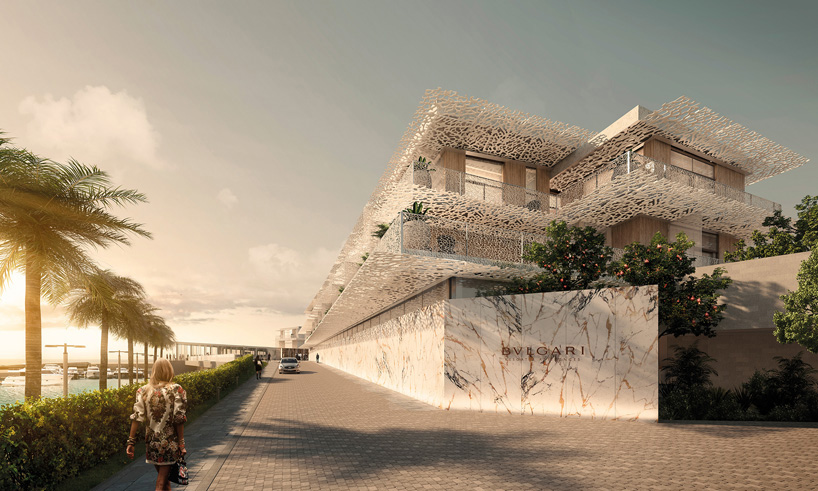
bulgari resort and residences, dubai, UAE (2014-17)
design antonio citterio patricia viel and partners
rendering copyright antonio citterio patricia viel and partners 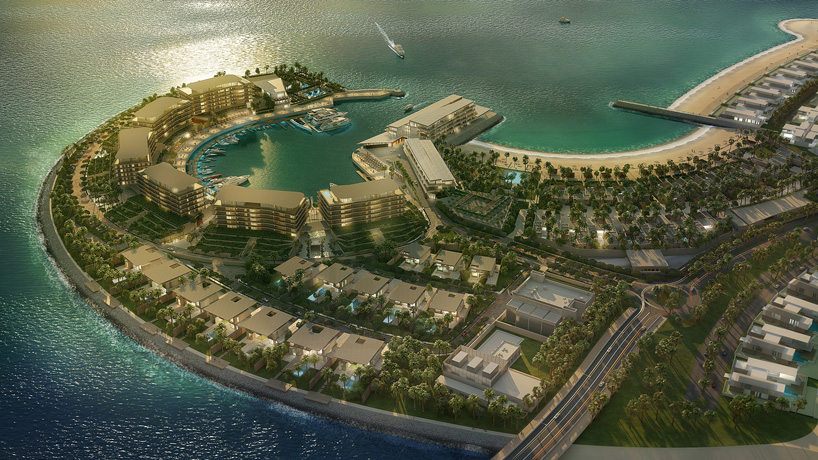
bulgari resort and residences, dubai, UAE (2014-17)
design antonio citterio patricia viel and partners
rendering copyright antonio citterio patricia viel and partners
DB: to date, which project has given you the most satisfaction?
PV: they are in construction! (laughs) I actually believe that in the next two years we will see the best project we have ever done. this is because of the maturity of the office. to be an architect is not something you can do as a young professional. you learn a lot through experience, and you have to be really deeply involved in the complexity of different experiences in order to become a master. there are no young masters in architecture. let’s just say, I believe the best project will be seen in 2017. but for now we have the headquarters for ermenegildo zegna that is a fantastic project for me, the technogym headquarters that was a very important achievement for the office, and here in milan what we completed for esprit in the 80s was something quite interesting for that time.
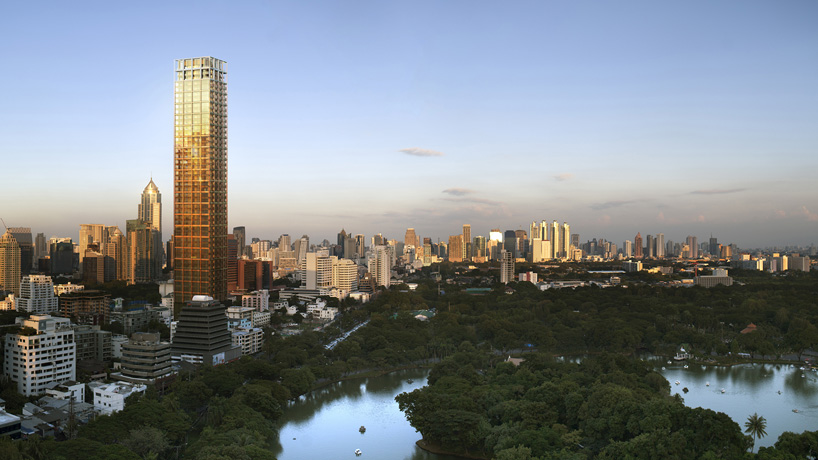
residential tower, bangkok, thailand (2014-ongoing)
design antonio citterio patricia viel and partners
rendering copyright antonio citterio patricia viel and partners 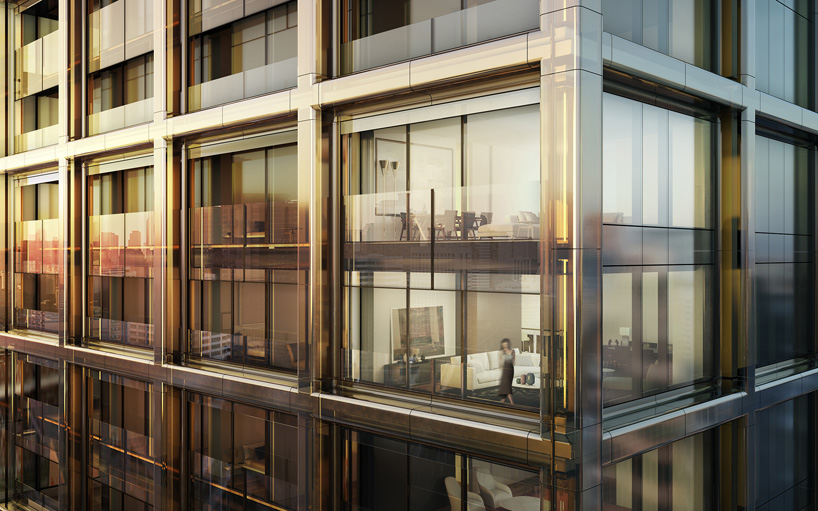
residential tower, bangkok, thailand (2014-ongoing)
design antonio citterio patricia viel and partners
rendering copyright antonio citterio patricia viel and partners
DB: is there a particular architect or designer whose work you are fond of? either from the past or present?
PV: from the past, I think le corbusier is probably the absolute master in terms of how we define modernity today. we are still following him as a model of architecture. gio ponti would be the other one, but he is more recent. it’s surprising because if you look at what le corbusier is capable of imagining in his years compared to his contemporaries, it is incredible. it’s absolutely unbelievable. for gio ponti it was probably a little bit easier because it was after the war and so on. but, more or less, they are equal in my mind — le corbusier and gio ponti from the past. as for architects today, it’s very difficult to say. I am really interested in the research that has been done by rem koolhaas about the relationship between what he calls ‘genetic architecture and urbanism’. so the need of having a loss of personality in buildings in order to be able to create a new urbanism. but I would say I am more interested in his theoretical expressions than what he really actually does, because there is a kind of distance between the two. chipperfield I think is one of the masters of today. the fact is that the multiplication of the diffusion of architectural culture is so wide today, that you really have to select your group. you pertain to a kind of area in terms of culture, references and attitude. so, I believe in our field probably david chipperfield is one of the contemporary masters.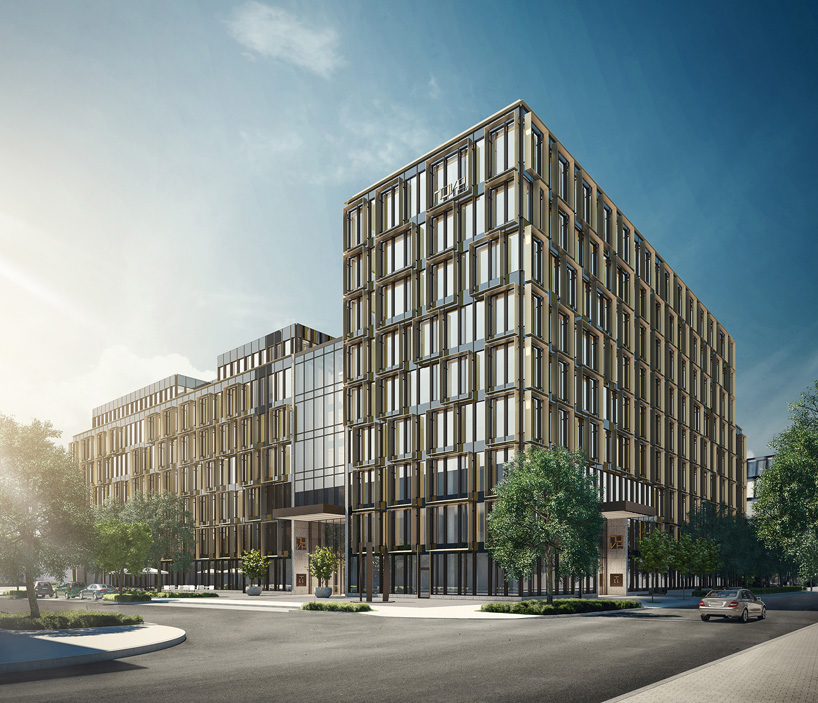
NOVE office building, munich, germany (2014-17)
design antonio citterio patricia viel and partners
rendering copyright antonio citterio patricia viel and partners
DB: do you find yourself discussing your work a lot with other architects?
PV: no, and that’s something that I really miss. I believe that it’s something that is not practiced among architects. for some reason they don’t meet, they don’t discuss, they are quite happy in their lonely world, and it’s a real pity. another thing that I miss is that when I am asked to be involved in seminars, conventions or whatever… I am always asked to talk about our projects which is extremely boring. it would be much much more interesting to put 10 architects around the table, say ‘this is the problem, what do you think about it?’ and start a discussion. that doesn’t happen. we should, through young people like you, promote the new millennium.
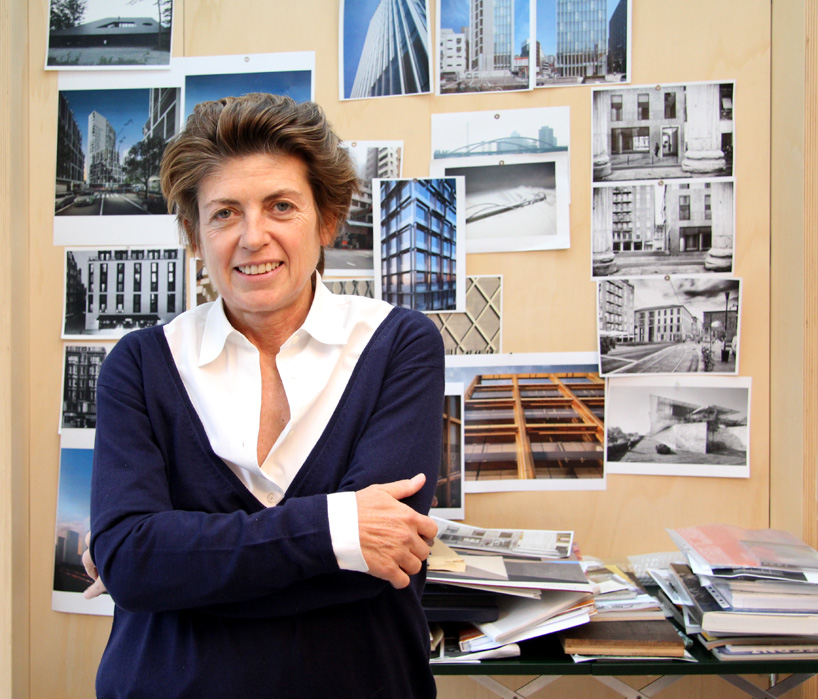
patricial viel
portrait © designboom
DB: what advice do you have for architects who are just starting out and are trying to emerge into the field?
PV: that’s a very good question because I think now we have to stop thinking that architecture as something that you can really manage and do by yourself. the complexity, the size, the needs, the speed in which you need to offer an answer to your clients are such that it is required that you are a group of people that are very well connected with a network of consultants and supporting players. for a young architect it’s very important to have different experiences. perhaps in different countries. that would be ideal. and, I think that it’s extremely important to work and have some experiences in other offices. if possible, a medium to big sized firm. one that is international and quite established. then maybe if they decide to prove themselves as a brand, to find some companions, or some associates… in any case, they need to start thinking that to practice architecture they need to be at least 20 people. it is the minimum size of an architecture office that is able to do something significant. if not that, it’s good to work as an architect with others in a big office, collaborating with important organizations around the world.
Save
happening now! partnering with antonio citterio, AXOR presents three bathroom concepts that are not merely places of function, but destinations in themselves — sanctuaries of style, context, and personal expression.
